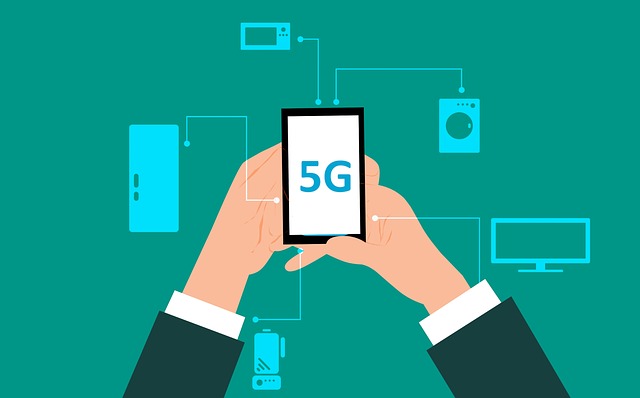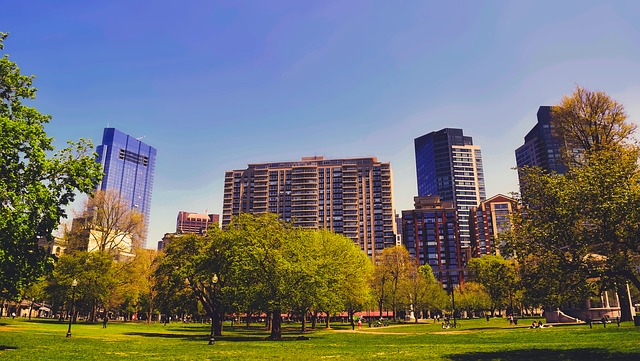Every so often we experience a large change in our infrastructure. Whether it’s the construction of our interstate system, building nuclear reactors, or opening a new hospital, these large projects ultimately make life better. In 2020, we expect the number of connected devices to increase by 776 million in the U.S. With more connected devices than ever before, it’s even more apparent how critical it will be to have high speed internet with low latency times and overall less congestion. Some of these new connected devices will be able to connect to a new 5G network, but what does that mean?

“5G” is the Fifth Generation of Wireless Networks. It uses the same wavelength technology originally used for satellites and radar systems. Due to 5G’s wavelength, which has difficulties traveling through walls, and other obstacles. “Small Cell” towers are required to be placed every 250 meters (820 ft), consequently, due to the nature of the “Small Cell” towers placement, local government approval is required in order for an area to support 5G.
Verizon estimates that half of the U.S. will have access to 5G by 2020, arriving first in larger cities. Verizon is currently the only internet service provider that has rolled out 5G in select U.S. Cities, thus far. The estimated total cost to build the 5G infrastructure is $2.7 trillion. Verizon’s CEO, Hans Vestberg, said, “5G has the potential to be one of the most transformative technologies we’ve seen in a long time.”
The availability of 5G is currently limited to a handful of cities in the U.S. The list consists of Denver, CO, Providence, RI, St. Paul, MN, Atlanta, GA, Detroit, MI, Indianapolis, IN, and Washington D.C. Additionally, Verizon plans on expanding 5G coverage to at least 30 U.S. cities by the end of 2019. These other cities would include Salt Lake City, UT, Columbus, OH, Boston, MA, Houston, TX, Memphis, TN, and San Diego, CA. However, 5G will not be available in suburbs or rural areas for years to come.

You may be asking yourself, “well, this seems like a lot of work, it costs a lot of money, and it seems a little inconvenient due to the placement of the Small Cell towers, as well as the requirement for government approval, is it really worth it?" The answer to that question is a resounding “yes.”
Let’s move onto the technical specifications of 5G’s speed and latency capabilities. 5G has a maximum speed of 10gbps (gigabytes per second), whereas 4G had a maximum speed of only 100mbps (megabytes per second). To put that into perspective, 5G is capable of being 100x faster than 4G.
Moving onto latency times, the maximum amount of time you would have to wait for a page to load, 5G has a maximum latency time of 4 milliseconds, whereas 4G has a maximum latency time of 20 milliseconds. The difference in those times is quick versus instantaneous. According to the Consumer Technology Association, the time it would take you to download a two-hour movie using each current generation of networks goes as follows. 3G would take 26 hours, 4G would take 6 minutes, and 5G would take 3.6 seconds. 5G is even faster than any cable or fiber-optic connection that you would use in your home or business. 5G is 4x faster than the fastest cable and most fiber-optic internet connections that are currently available.
Since it is new, there are a couple of common misconceptions about 5G, some of which are easily clarified, others are a bit more deceitful. For one, earlier this year AT&T began replacing the 4G symbol in the top corner of some of their subscribers phones with a “5GE” symbol, in an attempt to trick you into thinking you were somehow upgraded to 5G. Your phone most likely isn’t capable of supporting 5G, and it may not even be available in your area yet. “5GE” is not 5G, the “E” in “5GE” stands for Evolution, but an evolution of what exactly? AT&T’s existing 4G network that they have attempted to make faster.
The other common misconception about 5G is Wi-Fi related. There are two different wavelengths that your dual-band router at your home or business supports. 2.4GHZ and 5GHZ. When 5GHZ was introduced a few years ago, before talks of 5G internet were brewing, people began calling 5GHZ Wi-Fi “5G” for short. This meant nothing then, but now, with talks of actual 5G internet speeds, it can misleading.
5G Hotspots, which are available now, have the potential to replace traditional cable and fiber-optic internet options in homes and small businesses. As discussed, 5G is 4x faster than the fastest cable and most fiber-optic network options, there is no installation required, there are no messy cables, there isn’t any professional set up required, and you can bring it anywhere you would like, as long as wherever you’re going has a 5G connection. 5G hotspots will compete directly with traditional home and small business broadband network options.
With each coming day, 5G technology expands to somewhere new and becomes more reliable and usable than the next. It’s not every day that we experience an increase in our infrastructure of this magnitude. We can surely expect there to be an impact on not only our internet speeds and our connected device’s capabilities, but our economy, and the ways that businesses from all different industries operate every day.






